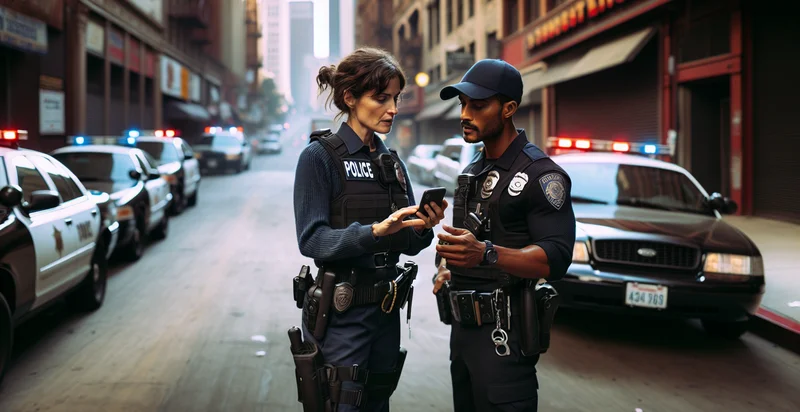Identify gender of police officer
using AI
Below is a free classifier to identify gender of police officer. Just upload your image, and our AI will predict if the police officer is male or female - in just seconds.

Contact us for API access
Or, use Nyckel to build highly-accurate custom classifiers in just minutes. No PhD required.
Get started
import nyckel
credentials = nyckel.Credentials("YOUR_CLIENT_ID", "YOUR_CLIENT_SECRET")
nyckel.invoke("gender-of-police-officer", "your_image_url", credentials)
fetch('https://www.nyckel.com/v1/functions/gender-of-police-officer/invoke', {
method: 'POST',
headers: {
'Authorization': 'Bearer ' + 'YOUR_BEARER_TOKEN',
'Content-Type': 'application/json',
},
body: JSON.stringify(
{"data": "your_image_url"}
)
})
.then(response => response.json())
.then(data => console.log(data));
curl -X POST \
-H "Content-Type: application/json" \
-H "Authorization: Bearer YOUR_BEARER_TOKEN" \
-d '{"data": "your_image_url"}' \
https://www.nyckel.com/v1/functions/gender-of-police-officer/invoke
How this classifier works
To start, upload your image. Our AI tool will then predict if the police officer is male or female.
This pretrained image model uses a Nyckel-created dataset and has 2 labels, including Female Officer and Male Officer.
We'll also show a confidence score (the higher the number, the more confident the AI model is around if the police officer is male or female).
Whether you're just curious or building gender of police officer detection into your application, we hope our classifier proves helpful.
Related Classifiers
Need to identify gender of police officer at scale?
Get API or Zapier access to this classifier for free. It's perfect for:
- Recruitment Analytics: Law enforcement agencies can utilize gender identification tools to analyze gender representation within their officer ranks. This data can help in tailoring recruitment campaigns to promote diversity and ensure a balanced workforce that reflects community demographics.
- Training and Development Programs: By identifying the gender of officers through image classification, departments can better assess the training needs and preferences of different groups. This can lead to the development of targeted training programs that cater to the unique challenges faced by officers of different genders.
- Community Engagement Initiatives: Police departments can use gender identification to evaluate their engagement strategies with the community. By understanding the gender composition of officers during public interactions, departments can foster programs that enhance community trust and collaboration.
- Bias Detection in Policing: The technology can help identify patterns of gender bias in police encounters, including stop-and-search operations. Analyzing gender representation in various policing situations allows agencies to address potential disparities and implement bias-reduction strategies.
- Resource Allocation: Gender identification can inform decisions on the deployment of officers during community events or incidents. Understanding gender dynamics can assist in assigning the right mix of officers to ensure effective communication and conflict resolution.
- Public Relations and Marketing: Departments can leverage insights about officer gender demographics in their public relations campaigns. Highlighting diverse recruitment and showcasing gender representation can enhance community perception and encourage engagement.
- Safety and Support Networks: Identifying the gender of police officers can help enhance peer support networks within departments. Safeguarding and mentoring programs can be tailored to ensure that officers receive appropriate support and resources based on their gender-related experiences.


